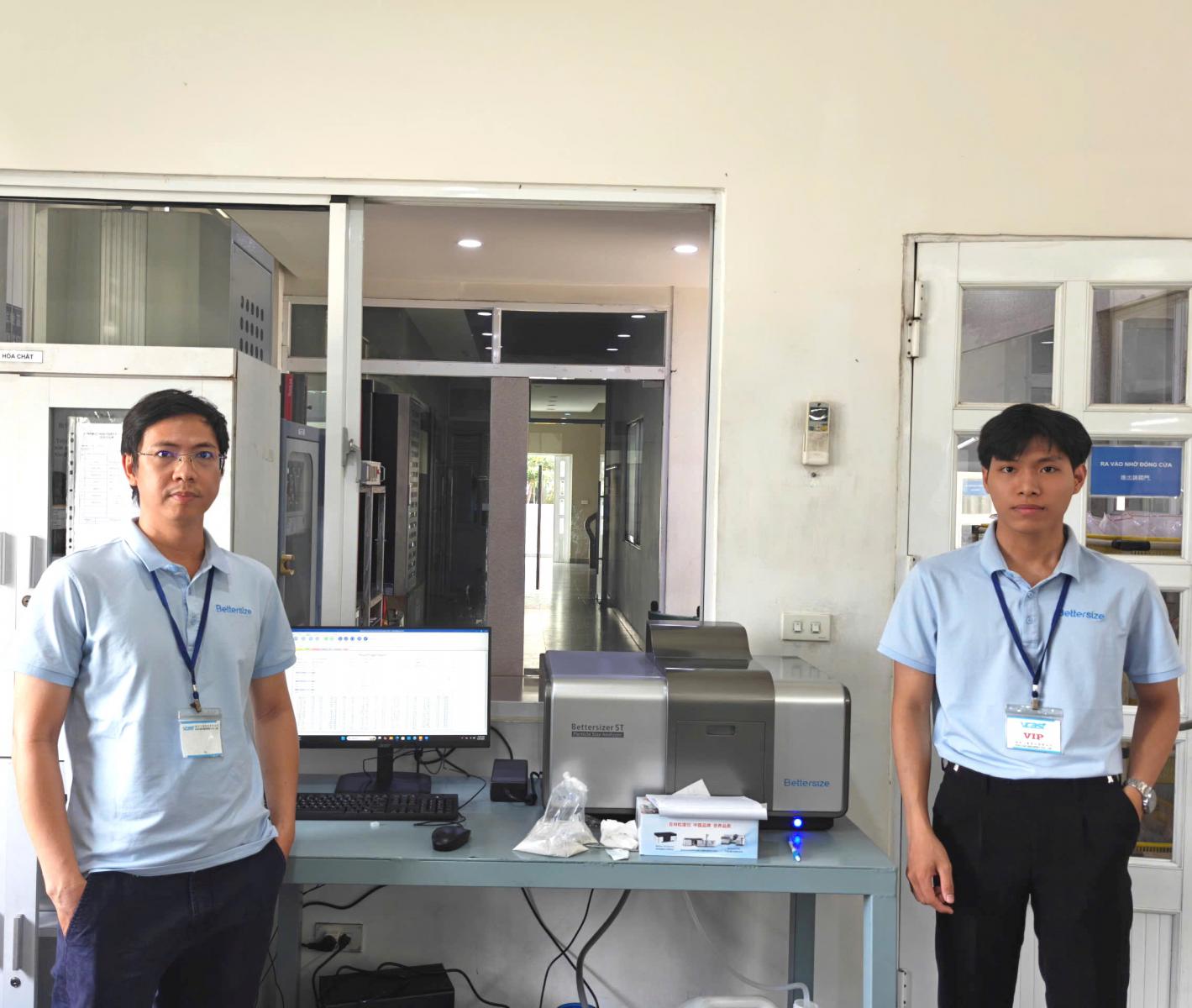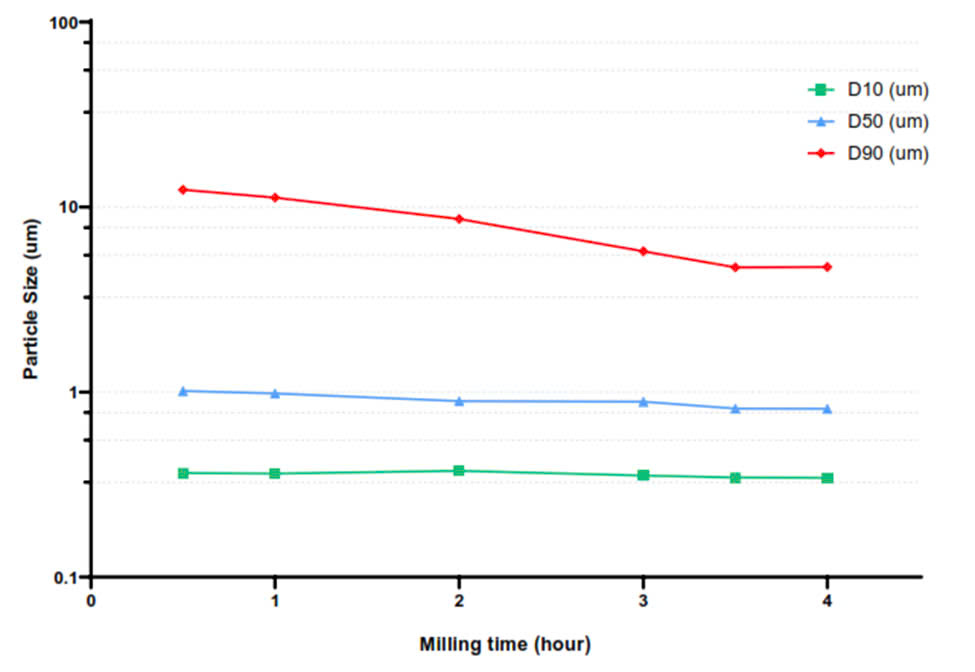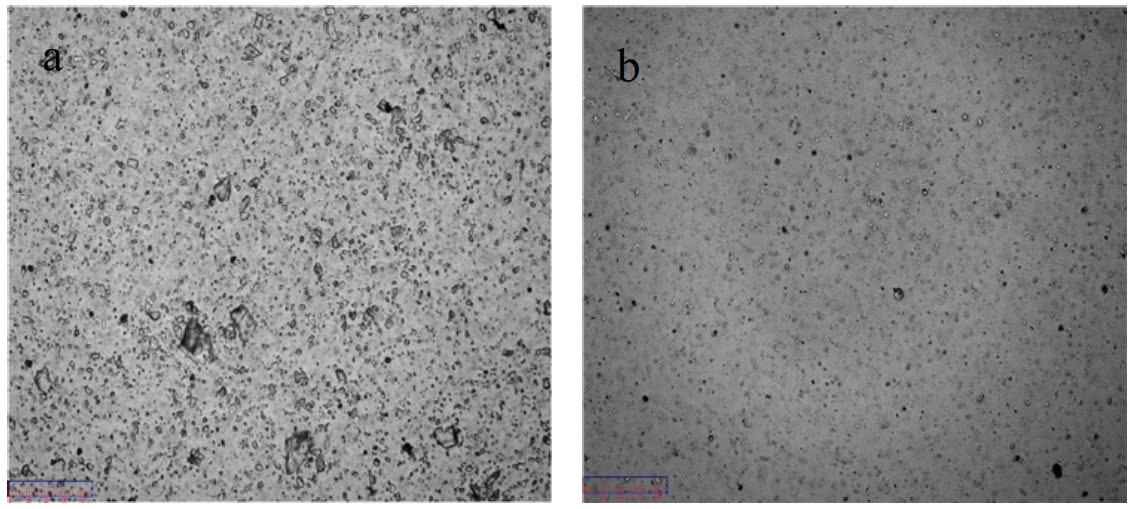Pesticides are widely used in the agricultural industry. According to the Food and Agriculture Organization (FAO), a pesticide is defined as any substance or mixture of substances intended for preventing, destroying, or controlling any pest.
v Introduction
The pesticide can be in form of a suspension concentrate (SC), emulsion in water (EW), suspo-emulsion (SE), wettable powder (WP), or microemulsion (ME).
Measuring the particle size distribution (PSD) is considered a vital part of the quality inspection process for the pesticide industry. The PSD of the pesticide’s active ingredient is related to its photodegradation speed, volatility, and specific surface area. Thus, the residual period and the biological activity of the pesticide are influenced by the PSD of the active ingredients. As for the final products of the pesticide, the PSD of particles, which includes powders but especially droplets, affects the coverage area. In the case of crop spraying, it is important to note that if a spray’s droplets are too large, they will fall onto the leaves and then drop onto the ground.
Pesticides on the ground cannot help to control pests living on crops. If the spray is too fine, winds can carry the spray droplets away from the target area and onto barren land or another farmer’s field. A PSD of droplets in between is what is desired. In addition, the PSD of the dispersed active ingredient particles influences the dispersity and stability of the pesticide product. Accordingly, both the PSD of the active ingredients and the PSD of the final product are indispensable control factors in the pesticide preparation and production process.
The Bettersizer ST, a laser diffraction particle size analyzer, was used for measuring the PSD of pesticide products and their active ingredients in this application note. The patented dual lens optical system (DLOS) in the Bettersizer ST provides a 0.1-1000 μm measuring range, which is suitable to use for most quality inspection processes in the pesticide industry. Besides providing a wide measuring range, the DLOS technique also helps Bettersizer ST provide the user with highly repeatable PSD measurement results efficiently.
v Evaluate Pesticide Products with PSD Results
The suspension concentrate (SC) is formed by dispersing insoluble solid active ingredient particles in the aqueous continuous phase. In general, the smaller the active ingredient particles, the shorter the residual period and the better the biological activity of the SC product.
In this experiment, the PSD of three SC samples were measured to evaluate the quality of these samples. These SC samples consist of different formulations containing different wetting agents and dispersants but are made up of the same active ingredient particles. The typical size values of three SC products are shown in table 1. The D50 of formula 2 is significantly smaller than formula 1 and 3, which means that it has a better suspension, and the stability of the SC product is better. Formula 1 has the largest particle size, more than 5 μm, accordingly it is susceptible to sedimentation which thus decreases its storage stability and ultimately shelf life.
Table 1. typical size values of SC in different formulations
|
|
D10 (μm) |
D50 (μm) |
D90 (μm) |
|
Formula 1 |
0.810 |
2.766 |
5.921 |
|
Formula 2 |
0.353 |
0.887 |
3.106 |
|
Formula 3 |
0.672 |
1.739 |
4.730 |

v PSD Results help the User to Optimize and Control the Milling Time of SC Product
Pre-milling is a widely used method for producing SC products. In this experiment, the effects of different milling time on the particle size distribution of SC were investigated. The typical size values and trend plot are shown in table 2 and figure 1.
It can be seen from table 2 and figure 1 that with the increase of milling time, D50 decreases from 1.015 μm to 0.812 μm, and D90 gradually decreases from 12.39 μm to 4.749 μm. When the milling time is extended from 3.5 hours to 4 hours, the typical size values did not significantly change. As the particles become smaller, the surface area becomes larger, and agglomeration is more likely to occur whenever the Iso Electric Point (IEP) is approached for the formulation.
In the absence of an effective dispersant, a finer particle size distribution cannot be obtained by extending milling time, so the typical size values hardly change.
The BeVision S1 image particle size analyzer was used to observe the milled SC particles. As shown in Figure 2, it can be found that the coarse particles above 10 μm existed at 0.5 hours, and the size of particles is much finer after the milling time reached 4 hours. From the above, the distribution of SC under different milling time can be effectively monitored by the laser diffraction particle size analyzer, thereby ensuring the stability of the product performance.
Table 2. Typical size values of SC under different milling time
|
Milling time (hour) |
D10 (μm) |
D50 (μm) |
D90 (μm) |
|
0.5 |
0.365 |
1.015 |
12.39 |
|
1 |
0.363 |
0.982 |
11.25 |
|
2 |
0.375 |
0.893 |
8.623 |
|
3 |
0.354 |
0.886 |
5.772 |
|
3.5 |
0.345 |
0.814 |
4.721 |
|
4 |
0.344 |
0.812 |
4.749 |

Figure 1. Trend size plot of SC under different milling time

Figure 2. Images of SC under the milling time of 0.5 hours(a) and 4 hours(b)
v Conclusions
Firstly, measuring the PSD of active ingredient particles is vital for evaluating the quality of SC pesticides. With PSD curves, producers could effectively optimize the formula of the components to ensure the best performance of SC pesticide products. Secondly, when processing pesticides, the Bettersizer ST can effectively inspect the product particle size distribution and ensure the stability of the product performance. In summary, for anyone who needs to diagnose problems that are related to the PSD, the Bettersizer ST is a handy tool to quickly provide consistent and reliable PSD results which can reliably be used to optimize the production process.
For further information regarding new machine quotes or maintenance and repair services for Particle size Analyzers, particle shape and powder characteristics instruments specialized for Pharmaceuticals, Biologics, Abrasives, Additive Manufacturing, Agrochemical Analysis, Battery and Energy, Building Materials, Ceramics, Chemicals, Electronics and Semiconductors, Environmental Analysis, Food and Drink Analysis, Metal Powders, Mining and Minerals, Nanomaterials, Oil and Petrochemicals, Paints, Inks, Pigments and Coatings, Polymers and Plastics... please don’t hesitate to contact us.
Hotline: (+84) 982 74 74 36 – 909 282 287
32/7 Ly Thuong Kiet St. – Ward 08 – Tan Binh Dist. – Ho Chi Minh City
Hotline: (+84) 982 74 74 36 - 0909 282 287
1/30 Nguyen Van Vinh St. - Ward 4 - Tan Binh Dist. - Ho Chi Minh City
Tel: (84-28) 3948 22 77 - 3948 22 99 | Fax: (84-28) 38 11 72 72
Email: sales@nqaco.com













